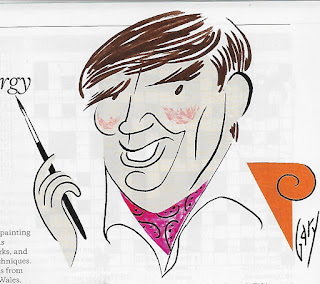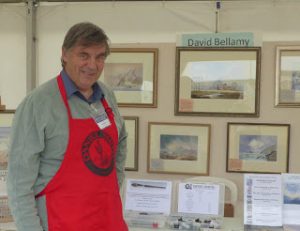Are you making the most of the stunning colours in the countryside at the moment? It’s a great time for getting out to capture one of nature’s most flamboyant periods with your camera, sketchbook or maybe even a full alfresco painting. Watch especially for those vivid colours backlit with strong sunlight that will simply leap off your watercolour paper. Birch trees can be especially rewarding when lit up by strong light, as white trunks and warm colours work together extremely well.
My watercolour of the River Wye in autumn on the left includes a great many trees (although this is not the entire painting), but the distant conifers have been left without detail to throw the emphasis onto the trees with autumn colouring. For these I have used new gamboge, cadmium yellow pale, cadmium red and some touches of cadmium orange, with French ultramarine with a touch of cadmium red for the far conifers. The painting was done several years ago, and since then my autumn palette has changed a little: I now use quinacridone gold, transparent red oxide, Aussie red gold and cadmium red in the Daniel Smith watercolour range, as these colours fairly sing out. In the painting note that the trees on the extreme edges of the painting have been kept fairly dull. This is to throw the emphasis onto the brighter trees and to avoid drawing the eye towards those edges.
While the sun doesn’t always oblige us when we need it, don’t forget that autumn scenes can benefit from a little rain, wind and mist – elements most artists prefer to keep at a distance. Rain produces puddles which can be used to reflect these vibrant colours, and if followed by a sunny spell the result can be magical as the scene glistens and sparkles. Mist can throw the emphasis onto a small group of interesting trees and obscure the rest, and wind, that bane of all landscape artists, can send clouds of leaves hurtling through the air. To include a few of these suggests a lovely sense of a windy day. Make the most of these moments as they can add so much authenticity to your work.
You will find further tips and examples on painting autumn scenes in my book David Bellamy’s Winter Landscapes, published by Search Press. It contains a chapter on the subject which is a preliminary to working on winter paintings. Signed copies are available at www.davidbellamy.co.uk





